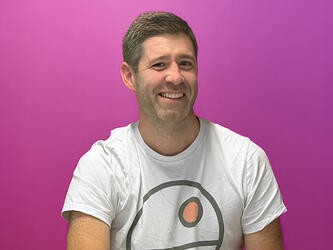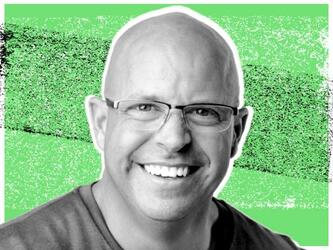Food for thought
If you grew up in the UK before the 1990s, the chances are your kitchen did not contain houmous, avocados, quinoa or even yoghurt. These current popular foodstuffs were rare to non-existent on British tables only a matter of decades ago. Food fads ebb and flow, with choices from supermarket shelves as susceptible to fashion as any other consumer preference.
Even amid change, however, some items remain essential –and so it is that Heinz, stalwart of the kitchen cupboard, has maintained relevancy, despite being a 150-year-old brand.
In fact, with a predominantly plant-based product portfolio chiming with society’s focus on eating less meat, and an austerity/Brexit-induced renaissance in canned produce – bootstrap cook Jack Monroe has recently published her Tin Can Cook recipe book – Heinz feels as current in today’s culinary era.
Gaining insight into grocery shoppers in the present climate of food trends is the remit of Colin Haddley, KraftHeinz’s director of strategy, insight, capability and marketing services, EMEA.
During eight years at the food manufacturer, Haddley has witnessed much transformation, including its merger with Kraft, but he says that the leadership has understood the importance of consumer insight throughout all the changes.
Indeed, his job title indicates that consumer insight is central to marketing and business strategy, rather than siloed, and Haddley’s overall aim is to ensure the consumer is put first throughout the business’s marketing and category teams.
As you’d expect with a company the size of Heinz, the insight team is constantly juggling multiple short and long-term research projects. “It’s a lean team, divided into continuous and bespoke research. We have a mix of nationalities and expertise and, over the years, we have built more and more influence in the business,” says Haddley.
There is a discipline inherent within the team, he adds, that starts with strong rituals and routines. “Each year, we comprehensively review macro trends with our agencies and we conduct a thorough situation review. We run brand-equity reviews quarterly; have two days a quarter with the area president and the CMO, systematically reviewing our brands; and meet weekly as a team to prioritise projects.”
One of its biggest recent projects has been the ‘Ideas Factory’, a process designed to democratise creativity across the business. It’s been a massive undertaking, which culminated in the team launching it to more than 100 people across marketing, R&D and sales. “It’s an online tool designed to change our approach to product ideation,” says Haddley.
“We want more people to generate more ideas, more of the time. But there are many barriers to this; the Ideas Factory offers a blend of stimulus, creative techniques and intuitive workshop planning to support more effective workshops.”
The team has added key macrotrends and category understanding into the tool, and pilots have already shown that preparation time can be cut by as much as 75%, says Haddley, whose team is also working to ensure consumer input is brought in earlier to the new product design process.
“In things such as our four-day sprint, we want to bring in prototyping much earlier. I know this is well-trodden ground, but it’s very hard to build it into the process because it’s a big effort. We’re trying a much more condensed process, involving consumers throughout, but there’s a lot of prep for that – you need to have the prototypes ready to use with consumers.”
Haddley is working toward breaking down the traditional staged approach to product ideation, where ideas, concepts and product development are all separate. “We need to blend these elements throughout the process and involve consumers in different ways. We are experimenting with new ways of working with consumers and data that are quicker, less transactional, and more iterative. This includes the Ideas Factory, using AI to develop opportunity platforms and social listening,” he says.
Few food manufacturers have escaped the rise in awareness of the salt, sugar and fat content of foods – especially in processed and junk foods. With increasing childhood obesity, high fat, salt and sugar (HFSS) foods have come under government scrutiny and it’s currently consulting on introducing advertising restrictions for these products. Inevitably against this backdrop, Heinz has looked at the formulation of some of its products, and established a four-point wellbeing plan – one of which is to ‘reformulate existing Heinz varieties, as well as launching innovations that offer healthier options’.
Haddley says that the macro trend of healthier eating was easy to spot; what was important for the company was maintaining the “Heinz signature taste”, with products such as its 50% reduced salt and sugar Ketchup and No Added Sugar beans. “We used research to validate the sensory profiling on those products,” he says.
In 2016, after 18 months of surveying more than 5,000 consumers, Heinz launched its Seriously Good Mayonnaise range, in a standard and light version. “We wanted to create a recipe that would work well across multiple geographies and have a very clean ingredient profile. It’s probably the most validated project I have ever worked on because it was a new platform for us – and it’s a big market,” says Haddley.
The merger with Kraft also opened up opportunities with brands outside the Heinz family. One of those was the Bull’s-Eye barbecue sauce range, which launched in the US in 1985. The company ran qualitative research in Germany and UK, alongside concept and product testing. “From this we identified a very clear target audience – ‘Tom’, who is open-minded, and values individuality and creativity, but also honesty and hard work. Tom admires people who display conviction and don’t compromise on what they believe in,” says Haddley. “With this target audience in mind, we built a full marketing mix. Our communications were anchored in ‘Cook Strong’ – supporting strong flavours and confident BBQ cooking.”
Bull’s-Eye was relaunched in Germany in late 2017 and launched in the UK in January 2018, and has achieved strong incremental growth and repeat sales, according to Haddley.
While Heinz is juggling a relatively broad product portfolio, its 150-year anniversary has been at the creative heart of its latest advertising. In April, the brand’s ‘clean plates’ ads ran across EMEA; its tomato ketchup was promoted by singer Ed Sheeran; and, in July, it launched its first masterbrand advertising for a decade.
The brand-building ads created by Bartle Bogle Hegarty London came in three executions – focused on Tomato Soup, Beanz and Seriously Good Mayonnaise – and centred on small moments of happiness in people’s everyday lives, with the strapline ‘Heinz makes it better’.
Heinz brought in advertising consultant Peter Field to discuss emotional brand building with the team compared with short-term sales activation. “We built these principles into our media planning with Starcom. We also use marketing mix modelling to understand how media complements in-store activity,” says Haddley.
“In the UK, we see a very strong halo effect between the brands, because we have a masterbrand that connects with consumers.
“Our 150-year campaign was an emotional brand build, with the ‘Heinz makes it better’ work in the UK more focused on individual categories. It’s got a strong appetite appeal and that does a slightly different job.
“The Ed Sheeran partnership and Heinz Caviar activities keep us connected to consumers by being salient – all these elements work together for a bigger impact.”
Many food brands have struggled to break out of the stereotypical housewife shopping and feeding her family format, so I wonder how much Heinz has tried to address that.
“The 150 years clean plate isn’t stereotypical; it’s a different perspective. You’re looking at interesting scenes; there’s a woman on the bus thinking about chips and mayonnaise, she’s not in the family kitchen – so we are moving away from that,” says Haddley. “It’s a challenge because, on the one hand, you want to trigger the mind’s reward system that knows about food in those places – but, at the same time, you want to differentiate. It’s about being true to the brand, being distinctive – triggering that emotion, but not relying on stereotypes.”
Advertising, of course, is geared to boosting sales. With the average shopper buying Heinz about 13 times a year, the company needs recency.
“People still have their way of building up their shopping and filling their store cupboard. We need to keep salient and remind people, and that’s why ongoing advertising is important. One good thing is to build some stock pressure – multipacks and deals; if you’re in the cupboard, you’re more likely to be used. You’re not necessarily going to drive out to get a can of beans and drive back, but – if it’s in the cupboard – you might think, ‘ah, I can use that’,” says Haddley.
Finances, of course, affect the way people shop and Heinz uses food diaries to understand motivations better. “In qual research, I’ve seen that people – particularly on a budget – may start the month in fresh produce, but, by the end of the month, they’re going toward store-cupboard essentials.
“What’s critical for us is the host food – the food that goes with beans, such as potatoes, toast or sausages, or the food that goes with ketchup or brown sauce.”
Heinz uses all the big guns for its information gathering – from Nielsen’s electronic point of sale (Epos) data, to panel work from Kantar, GfK and Nielsen. “We moved to Ipsos three years ago on brand tracking; it has a strong methodology, which includes attitudinal equity – essentially, how close consumers feel to the brand and rate its performance – and then market effects, their perception on price and availability. Brand tracking provides a common language for assessment across all our brands and we measure that across EMEA,” says Haddley.
For social listening, Heinz uses Synthesio, and it has worked with Xanobia to fix the language used around the Heinz brand. “We’ve done a lot of work on tightening up the brand foundations. We are building on the work that people have been doing for the past 150 years, and trying to codify it, to then produce more consistent work moving forward. It’s the idea of simple greatness – doing common things uncommonly well.”
There is no shortage of insight work at Heinz, and Haddley sees it as two discrete types of work.
“First, using consumer insight to inspire – and I am very pluralistic in terms of data; I don’t think one methodology has to be the right answer, because they all give clues about needs. Here we want to invent and create, which is why things such as the Ideas Factory are so important.
“Once you have created something, the second area of work is validation. That’s when I want to be super-strict on method – when I want to compare results and benchmark. In my experience, people get lost in the front end or the back end of that. Research will not tell you the answer, but it will definitely validate the answer you come up with.”
This article was first published in the October 2019 issue of Impact.

We hope you enjoyed this article.
Research Live is published by MRS.
The Market Research Society (MRS) exists to promote and protect the research sector, showcasing how research delivers impact for businesses and government.
Members of MRS enjoy many benefits including tailoured policy guidance, discounts on training and conferences, and access to member-only content.
For example, there's an archive of winning case studies from over a decade of MRS Awards.
Find out more about the benefits of joining MRS here.














0 Comments